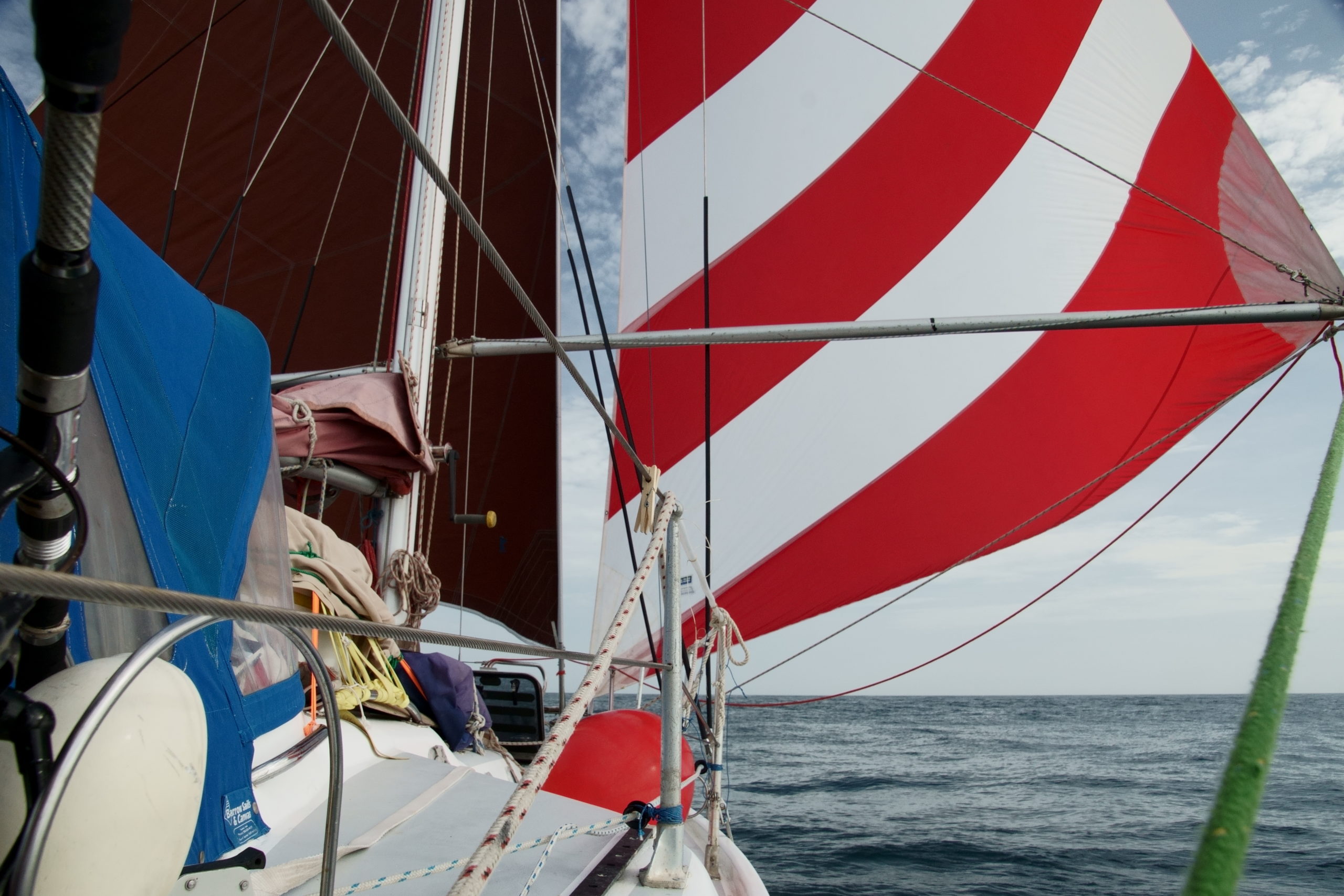
Ahead of us we had more than 4000 nautical miles – almost 8000 kilometers. The passage from Panama to Nuku Hiva in French Polynesia has been the longest crossing so far. We expected 35 to 40 days at sea and already the first ten were promising to be the worst!
The last night in the waters of Panama we have spent at anchor in front of a small Island called Contador within the Las Perlas archipelago. Although not 100 percent legal, the island was calling with turquoise water, white beaches, Internet and as well with a small gas station where we wanted to fill up our dinghy jerry cans.
When we arrived, we dropped the hook in the same bay as Rollo Gephard did 46 years ago. (He was a famous German sailor and my inspiration to start the journey.) He spent a few days at Contador to get last things done for his Pacific crossing. In his book “a man and his boat”, he describes the island.
“Contadora is about 4 kilometers long and two kilometers wide. The island was uninhabited in first place, but was bought by a construction company, which first built a hotel and later sold properties to private owners. An airport and a street – to transport all the materials from the ships dock to the hotel and the villas-, has been built. As all of the islands out of the “Las Perlas”, Contadora does not have any tropical plants (…). For the workman, there was a small grocery store set up(…)”.
We found ourselves pretty good in the described place! We saw the ships dock and the airport. Kind workman gave us a ride to the gas station which is now part of the old grocery store. It was incredibly hot! Only a few minutes after we have left the cooling breeze from the see, our shirts were soaked in sweat. There are Villas and Hotels all around the shoreline and in the northern part of the island we discovered a whole complex of left behind hotel ruins.
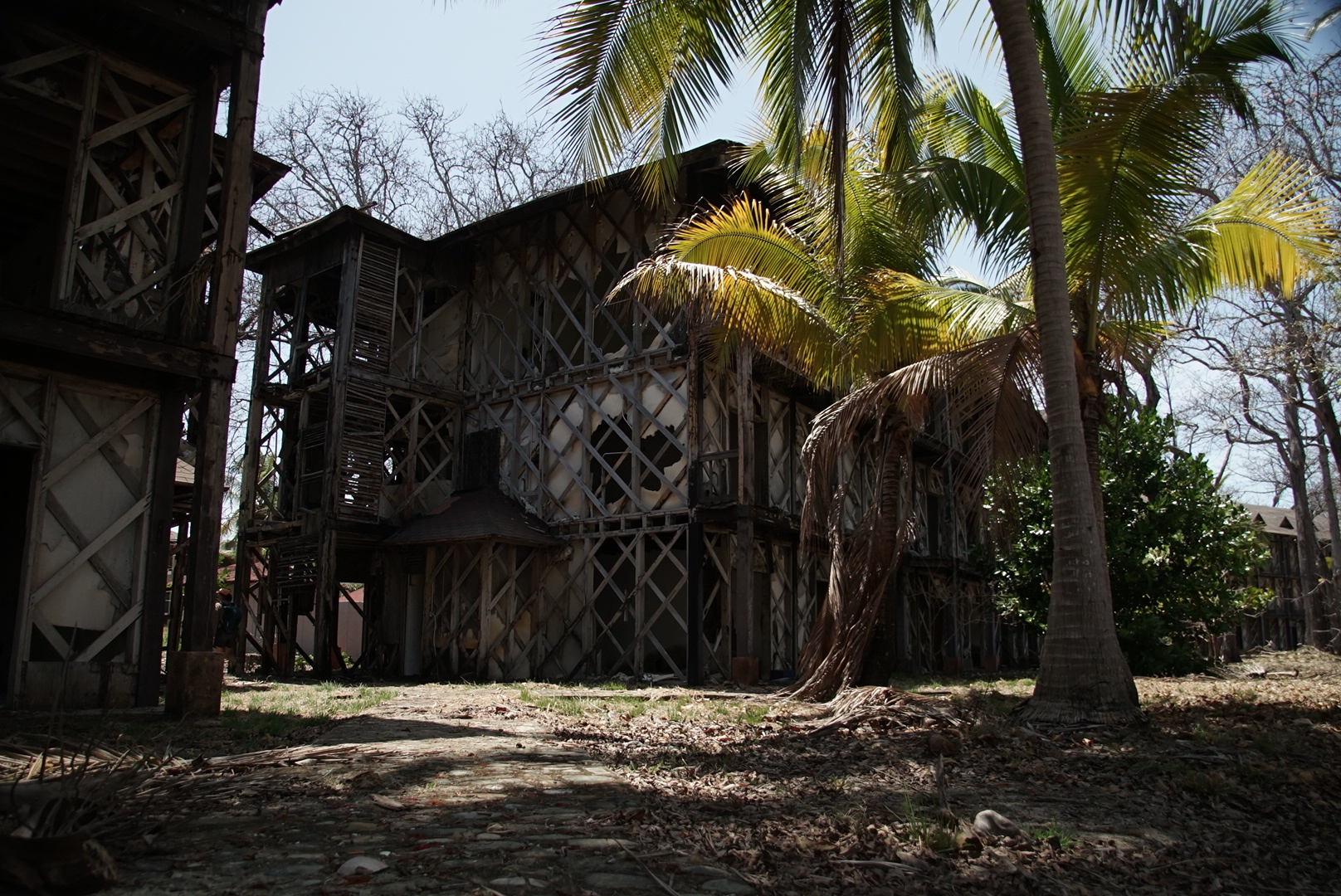
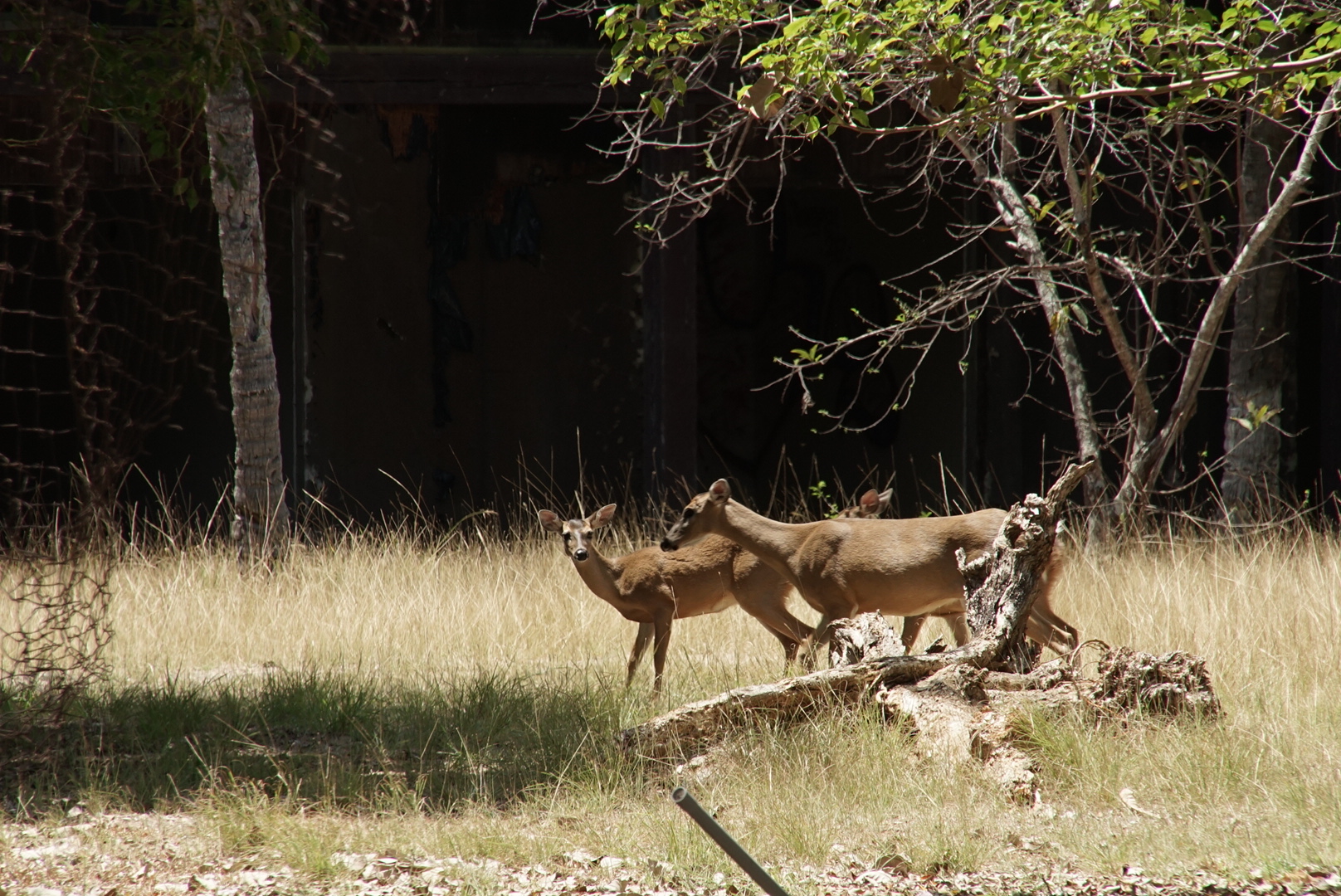
Good thing for us: the work on WASA already has been done. Therefore, we used the conveniences of the big City of Panama. Although, it only have been smaller tasks to do, the list added up.: “service the furler”, “grease the winches”, “inspect the mast”, “organizing jerry cans”. Also, we had to do our paperwork for French Polynesia, fuel up and create further storage room for fruits and veggies.
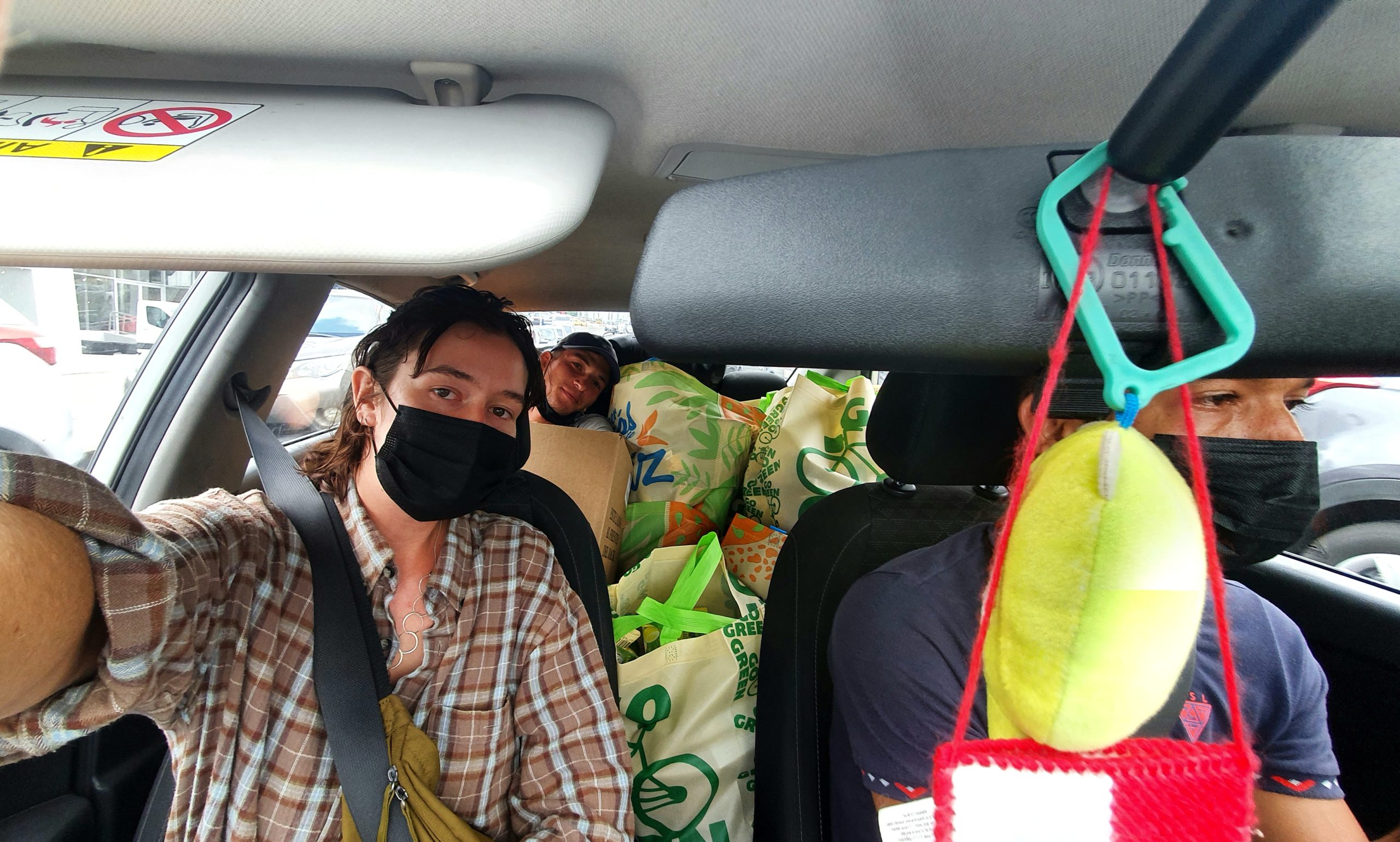
The grocery run itself took us two days! After five hours of shopping, we were back at the boat in the afternoon. But still; we were busy until it got dark. We got rid of excess packaging material and removed every single label from the cans to avoid the import of cockroaches. The second day we’ve spend on the fruit and vegetable marked to collect our vitamins.
We filled our tanks and jerrycans with a total of 360 liters, what should be enough for approximately six weeks.
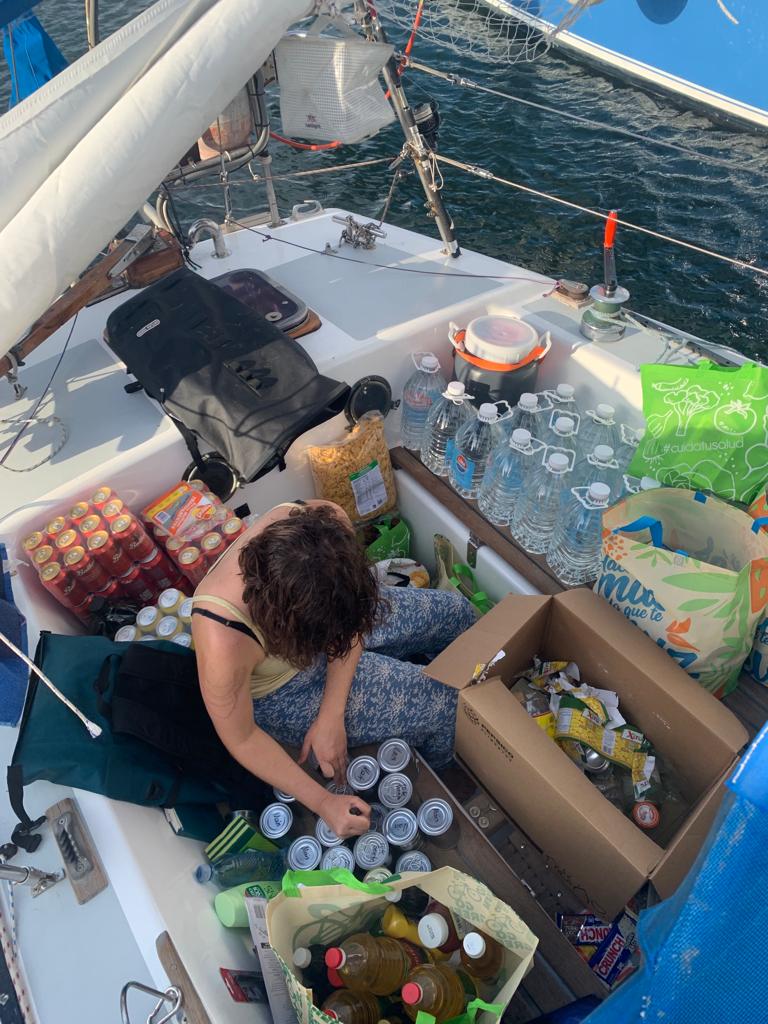
Then, on the 15th of March we were finally ready to leave! We pulled up the anchor, waved goodbye to our new friends on BLUE BERYLL and carefully searched our way out of the shallows back into the open sea.
The wind was blowing quite strong, and the islands disappeared quickly behind the horizon. Perfectly timed, with the dinner ready, we had to take down the main completely. We were cruising with more than 5 knots with the genoa only!
Time to go to bed- at least for Emma. Beginning with the sunset, our night watches would start. Everybody was three hours on and three hours of. Unfortunately, with only the two of us, that would be not enough sleep at all. We decided that sleeping is allowed during the watch as well. A timer every 20 Minutes woke us up and kindly reminded us to have a lookout and to check the course.
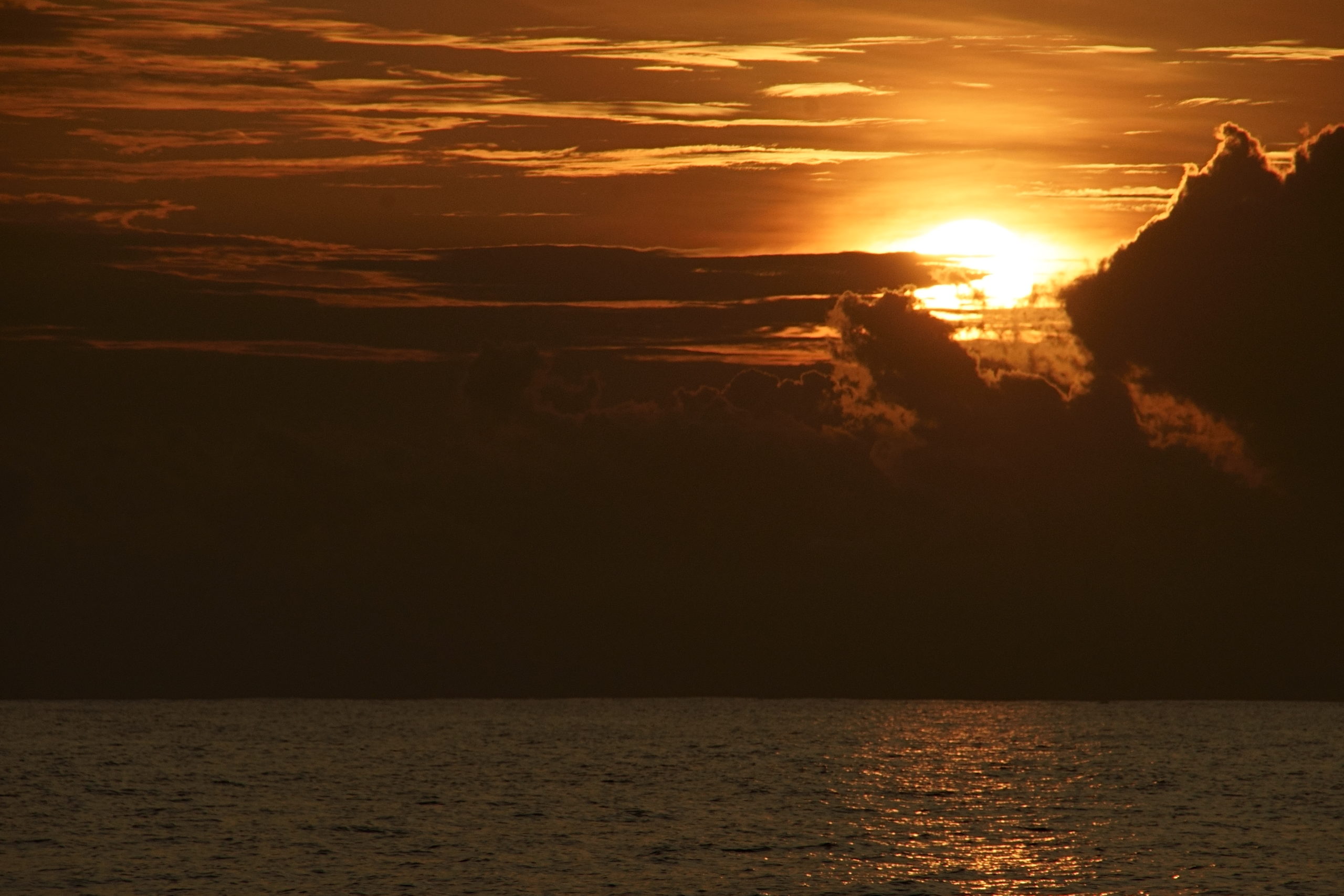
Since we’ve left the Golf of Panama, we were pretty much alone at the sea. The AIS would give us an alert in case a big cargo ship or any other vessel with a transponder would enter our safety zone. The few fisher boats we saw were very good recognizable very early due to their strong working lights.
Suddenly something unexpected happened: I just tried to find some rest after my last lookout and layed down in the cockpit when something hit the bow with a big bang. It scratched underneath the hull, along the keel and was hit several times by the ships propeller. A terrible noise! My hand was instantly grabbing the throttle and pulled it back into neutral. Then I jumped up, got the torch and starred into the water behind the boat. Slowly, super slowly, a big junk of a tree appeared underneath the rudder. I stopped breathing and was just hoping, that it wont rip it off.
Luckily, everything went fine! Once again, the solid structure of WASA was rewarded. Northing happened. The tree almost stayed invisible- only a tiny little stick was visible above the waterline.
In the next days, the engine almost was working consistently. During daylight we tied to avoid the engine as much as possible and we set the lightwindsail in every little breeze of wind. As thunders and squalls are almost invisible during the night, we took it down with sunset. Only the main stayed up the whole 24 hours: It will prevent the boat from rolling in the waves and in motorsailing we could gain a little bit of extra speed.
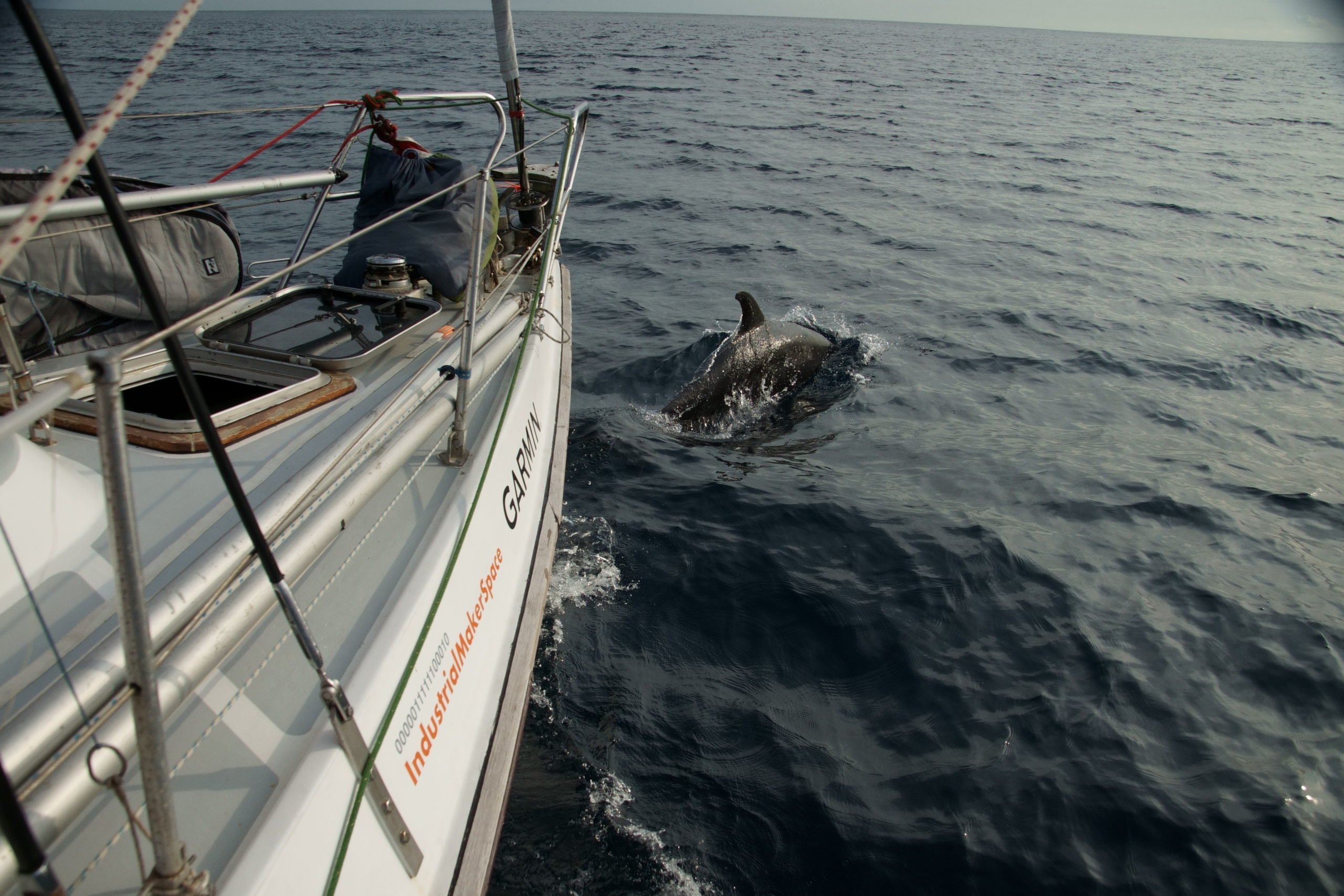
At day five, I already counted seventy enginehours! That is the half of our reserves. We were still in the middle of the doldrums and still days away of the promised stable tradewinds.
Every sailor knows the doldrums. They are also called “the calmes” or the ITC – the innertropical convergation zone. Here, the tradewinds from the northern hemisphere meet those from the southern half of the world. As a result, they leave behind a field with only light or none winds, Squalls and intense humidity. The position and its diameter vary with the seasons. In our case it went from Panama all the way south to Galapagos – 800 nautical miles.
We had to use our fuel wisely to not get trapped in the doldrums for days within our last miles!
At the 22nd of March something was different. It wasn’t the engine waking me up. We were healing and I hit against the leeboard of my bunk that saved me from falling to the floor. The wind had picked up and Emma set the genoa! We were shooting through the waves in a five knots upwind sail!
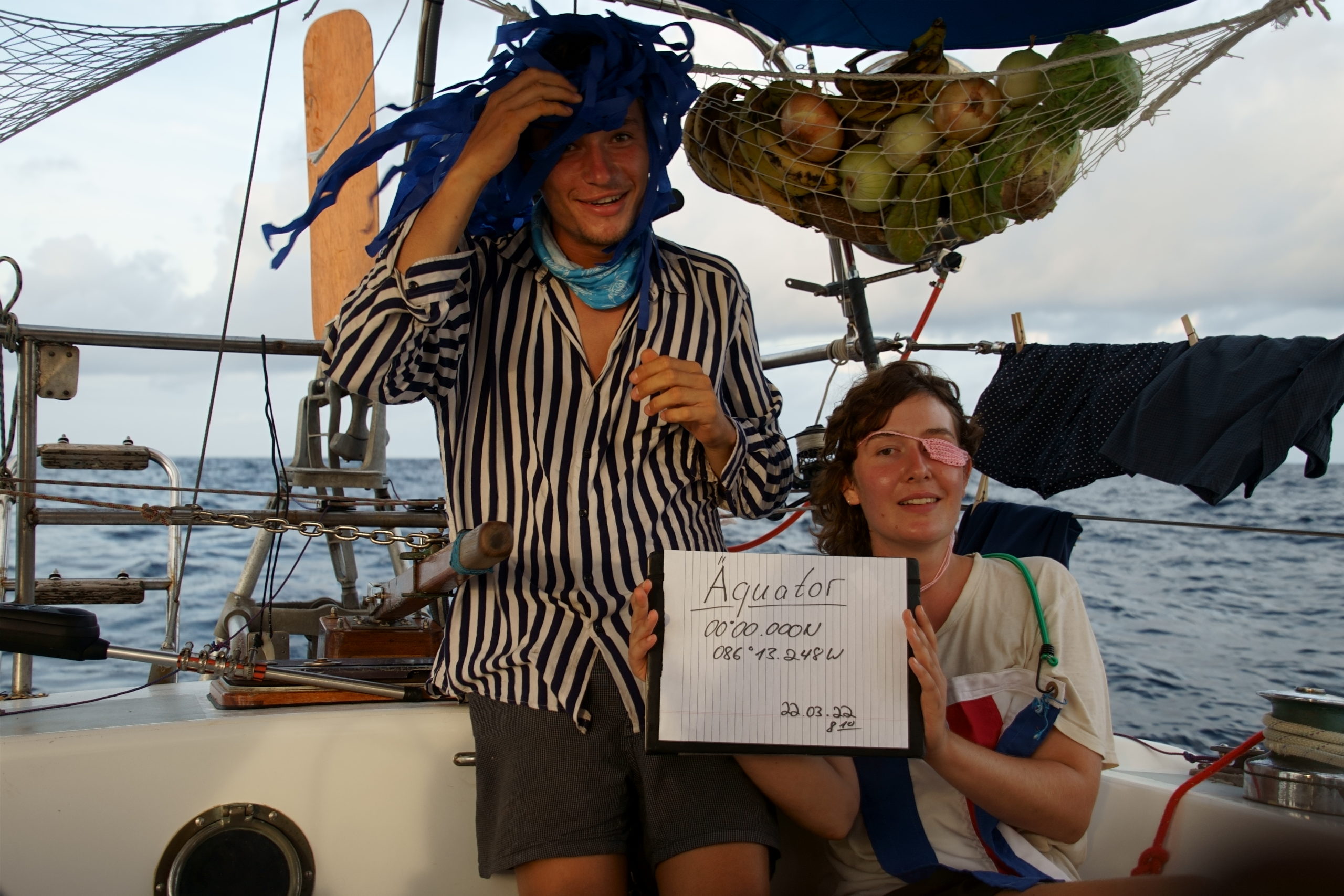
At eight o’clock we in the morning we passed the equator! We had costumes prepared and wanted to have a traditional equator celebration with a proper baptism and a gift for Posseidon. Instead, due to the huge rough waves, we turned seasick! Emma even had to throw up once. So we decided to keep it simple, tried to sleep and finished the day with a nice, slightly burned cake and vanilla sauce.
17.10 o’clock: Engine start! – As fast as the wind picked up, it disappeared.
We already had no- wind- conditions, thunders and squalls. What we haven’t had so far: Rain – and now we got a lot of it. It was bucketing when Emma decided to escape the “bad mood saloon” and washed our laundry by hand with catched rainwater.
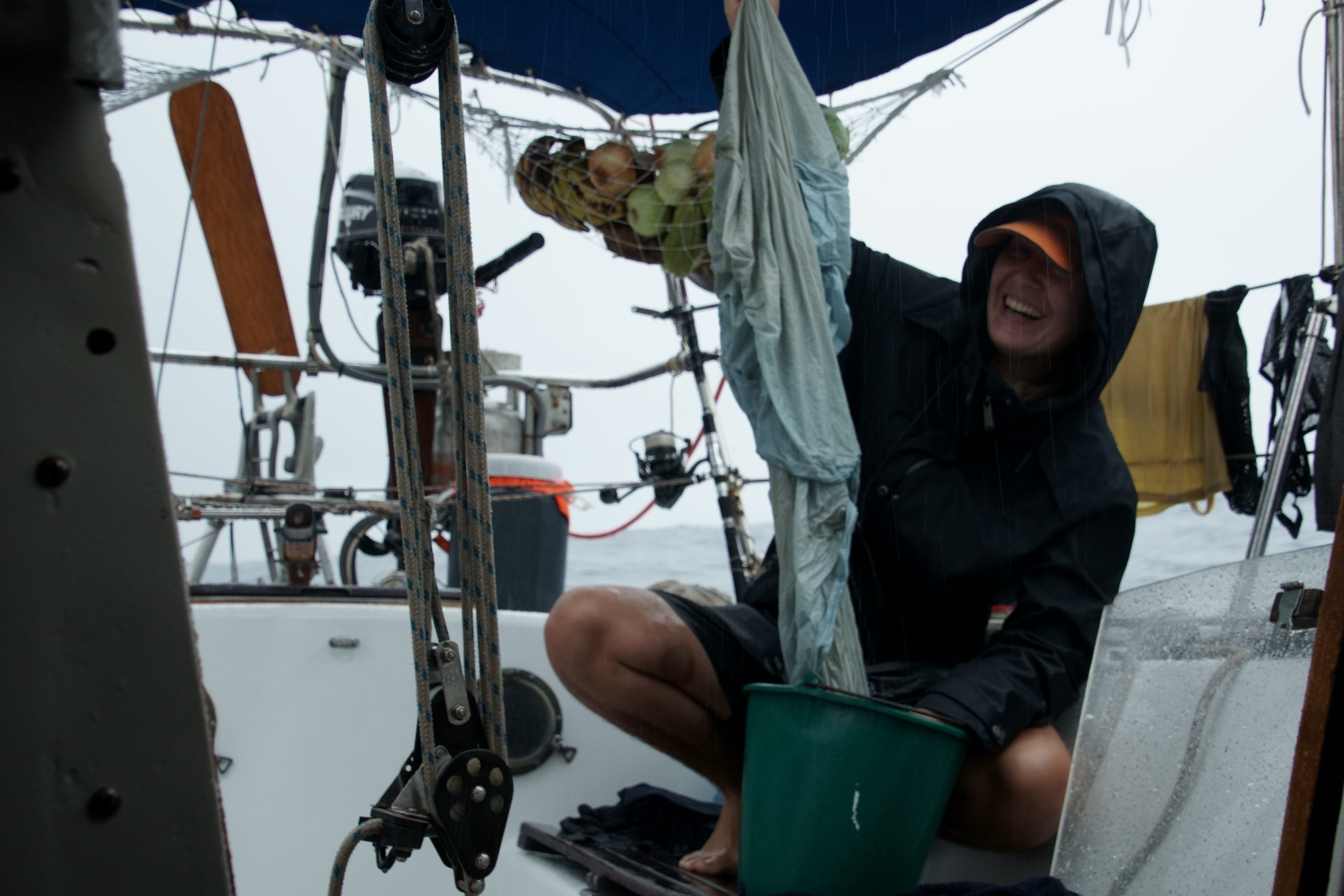
11 days after departure I wrote into my notebook:
“Nice sunny morning! Blue sky. Only a few clouds are left and a fresh wind is blowing from the south with 16 – 19 knots. The sea is dark blue colored, choppy and riddled with white breakers. The sails are full up. It’s al ost a beam reach and we’re cutting through the waves! It is great to have the wind back, to feel the power of wind and ocean in every part of the boat
We have left behind the magical 5° south latitude. Now we are in the trades! We changed cours to 256° and headed straight towards Nuku Hiva!
